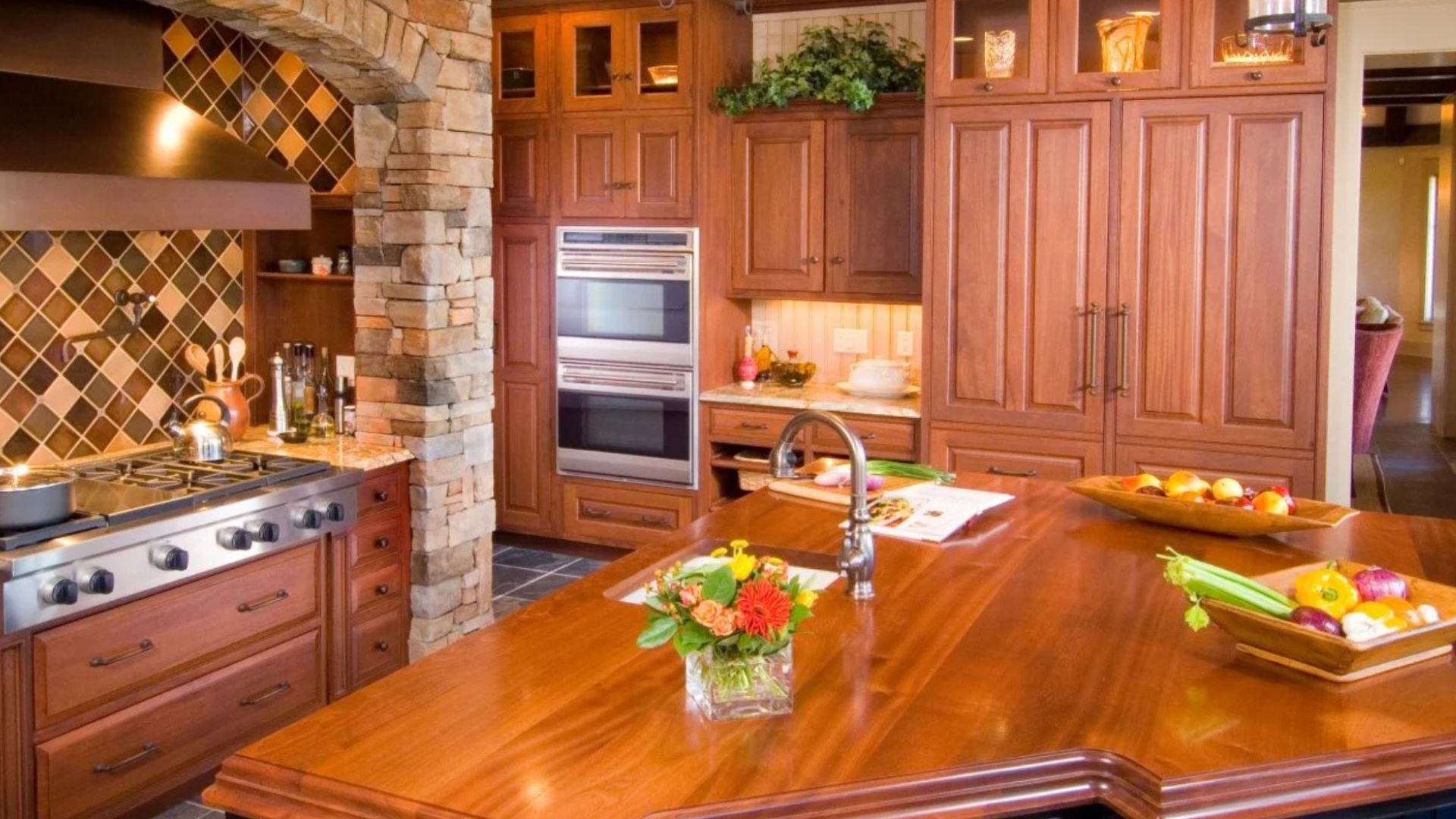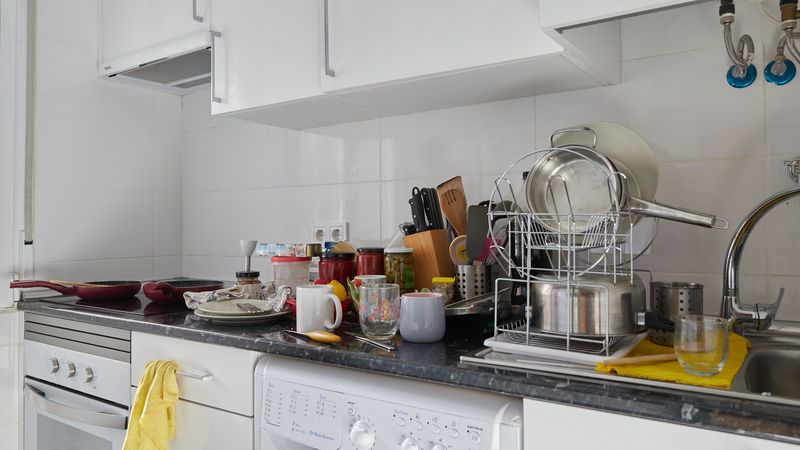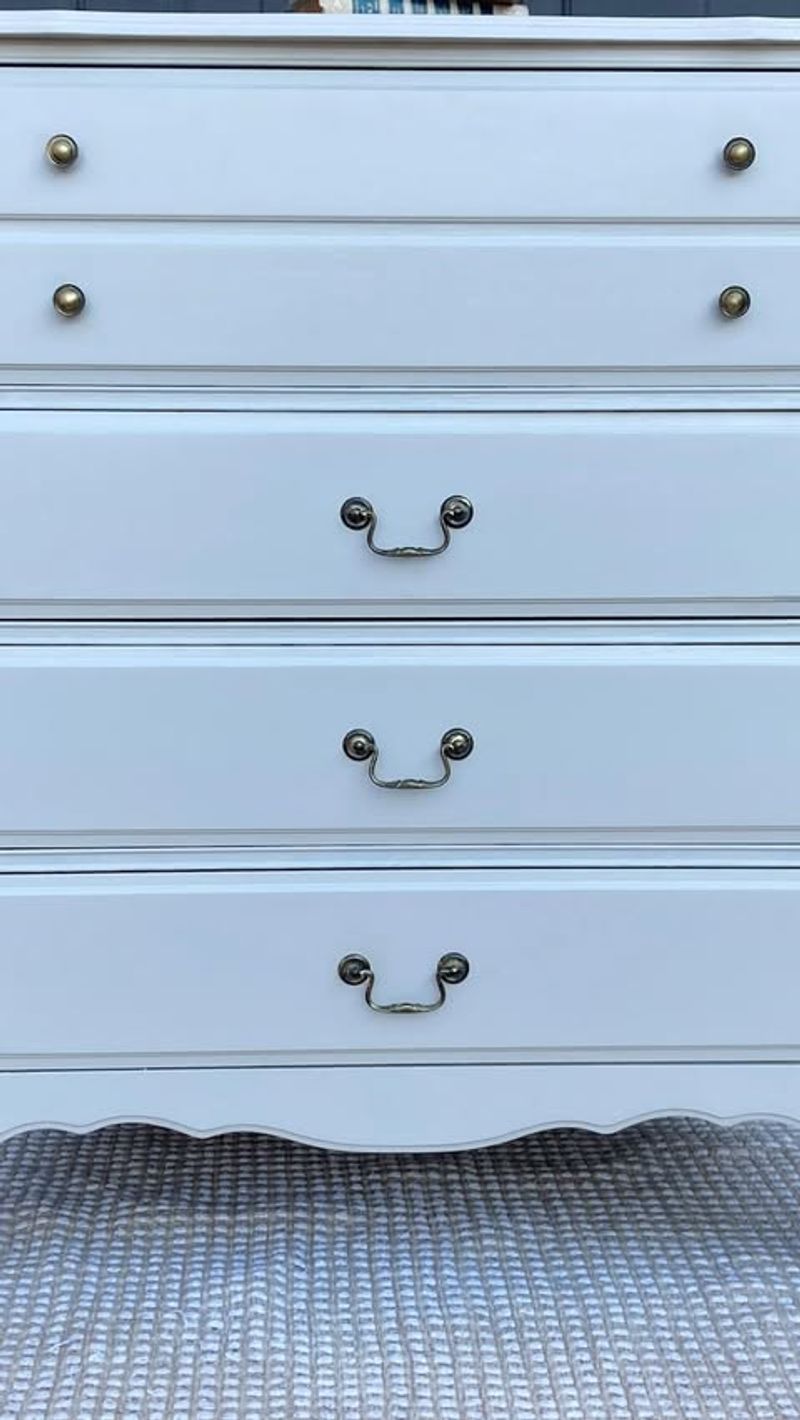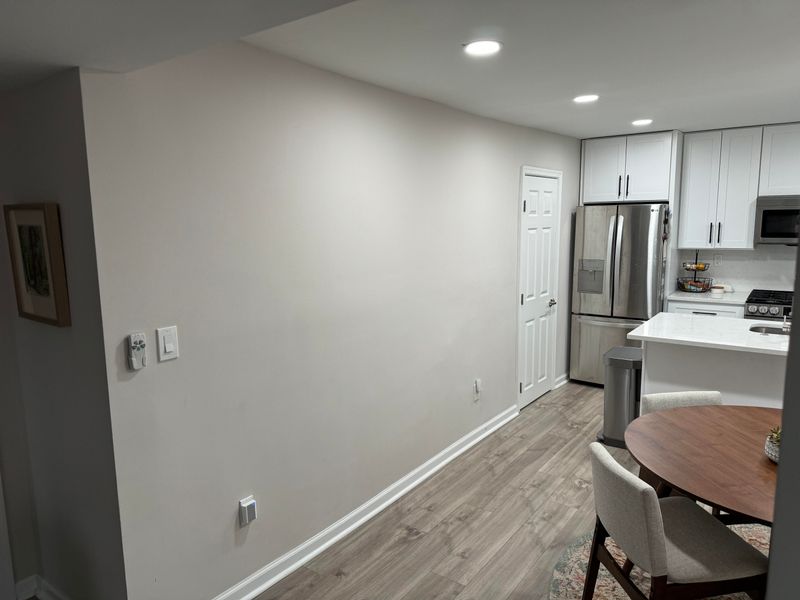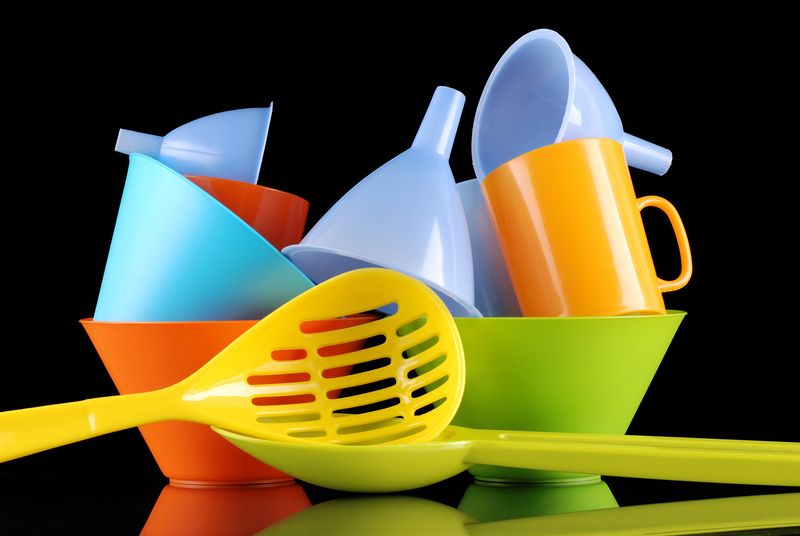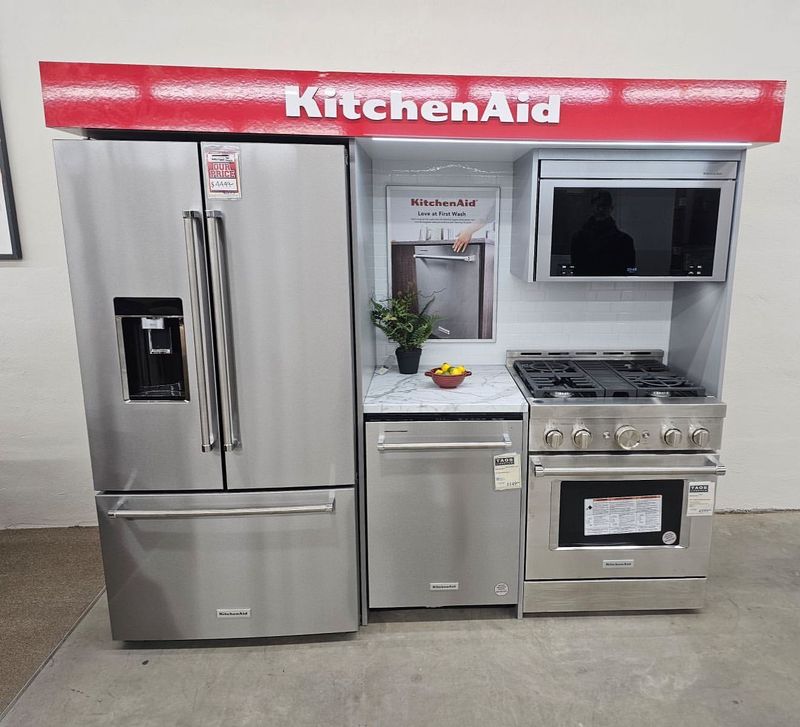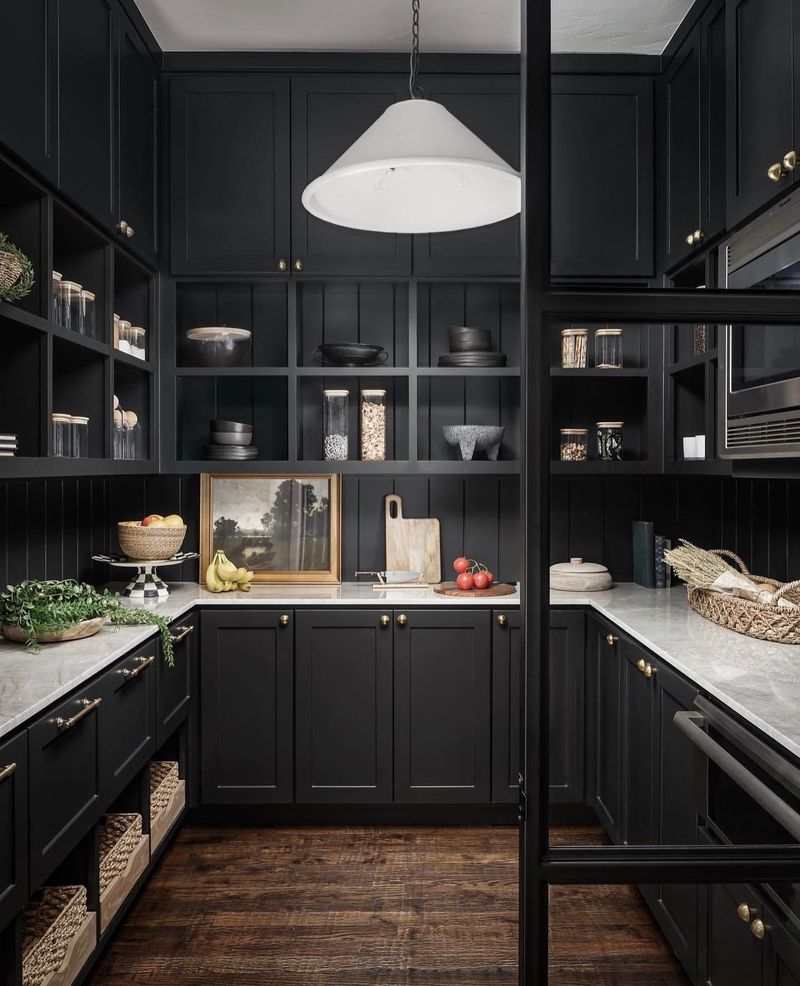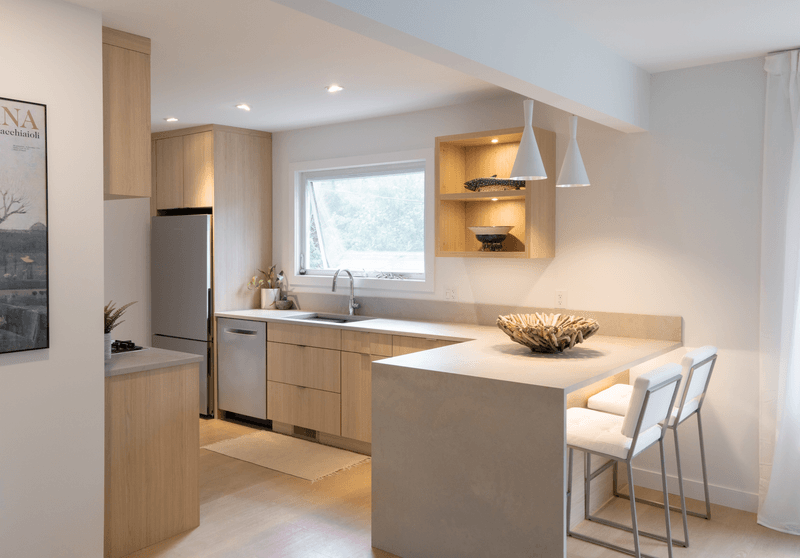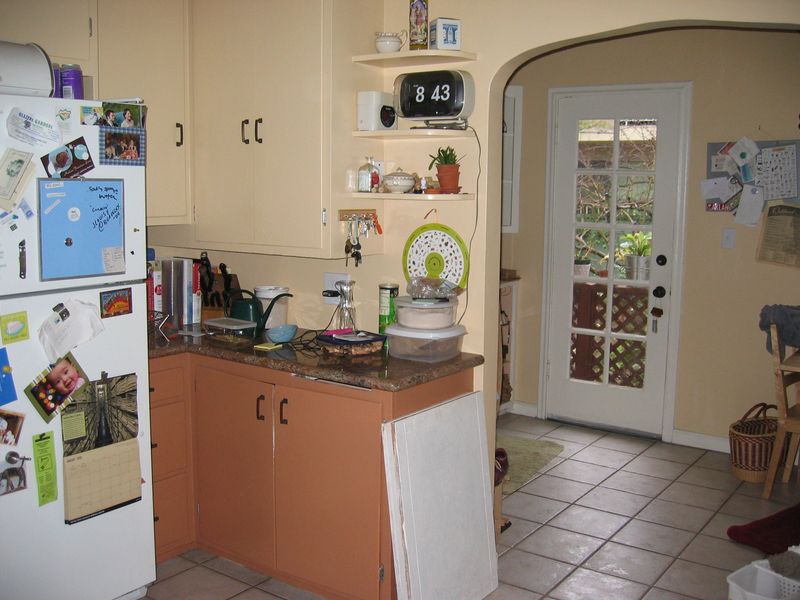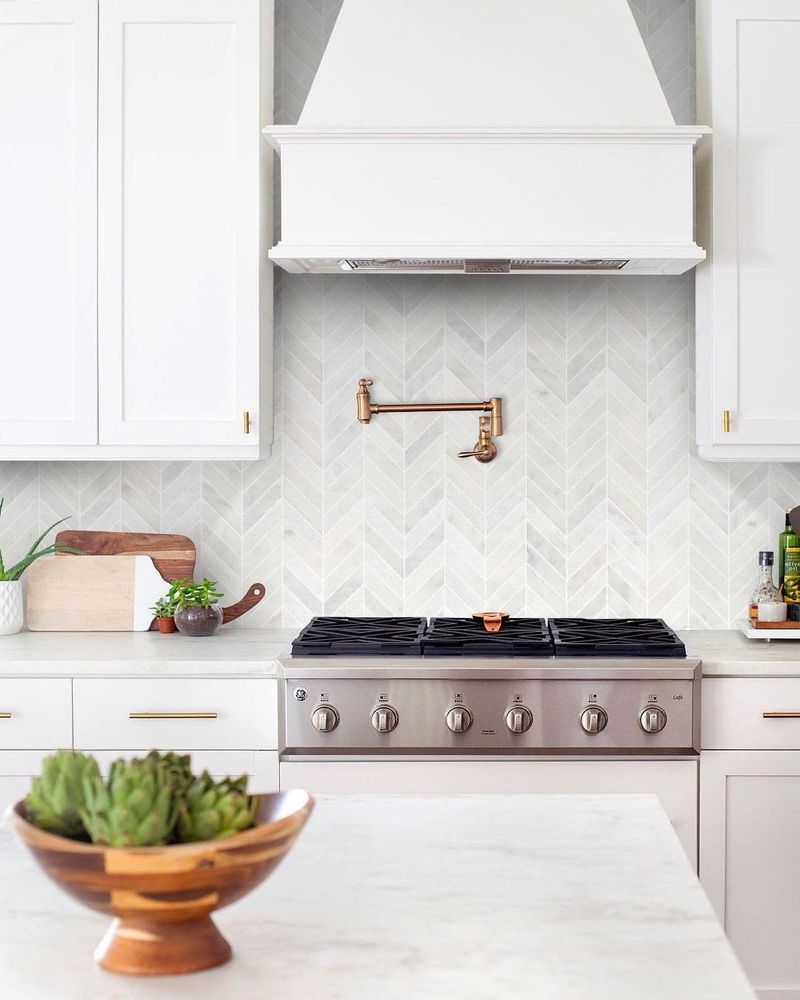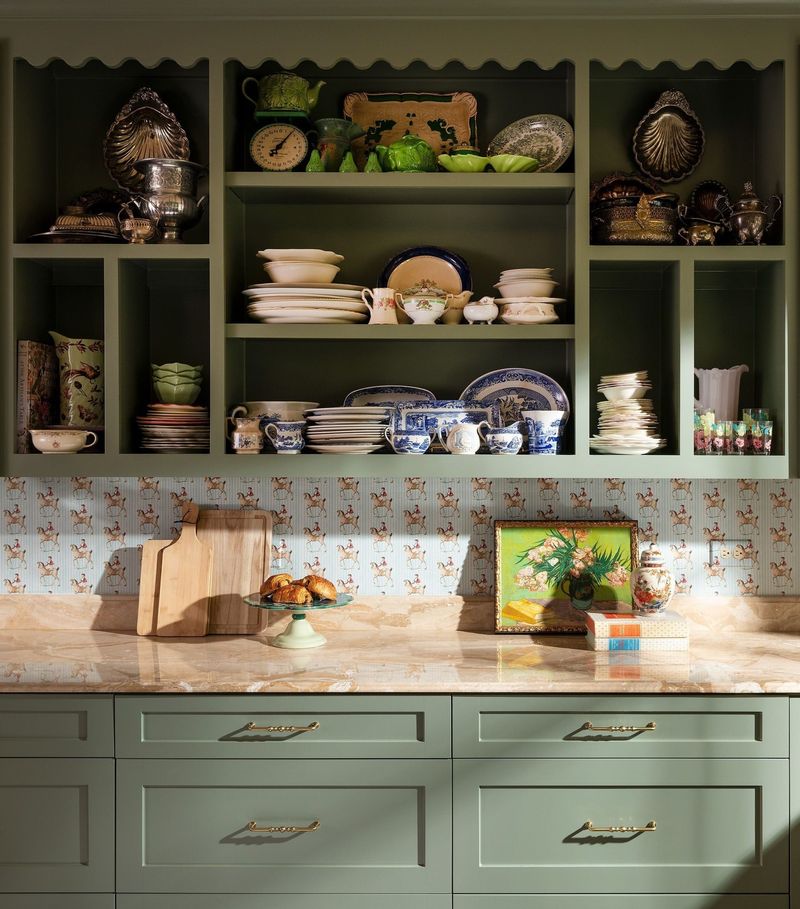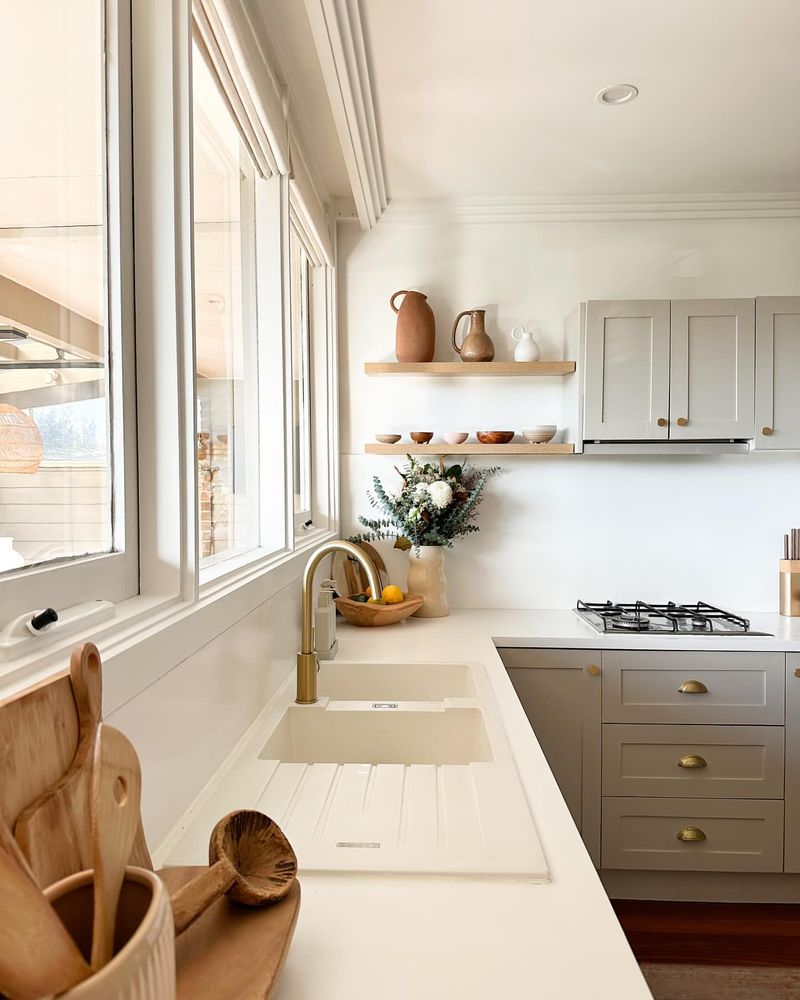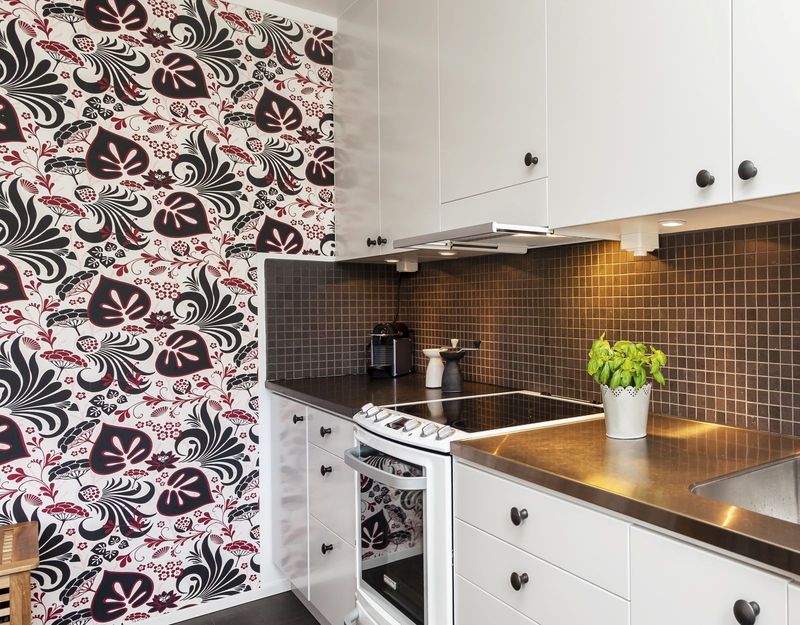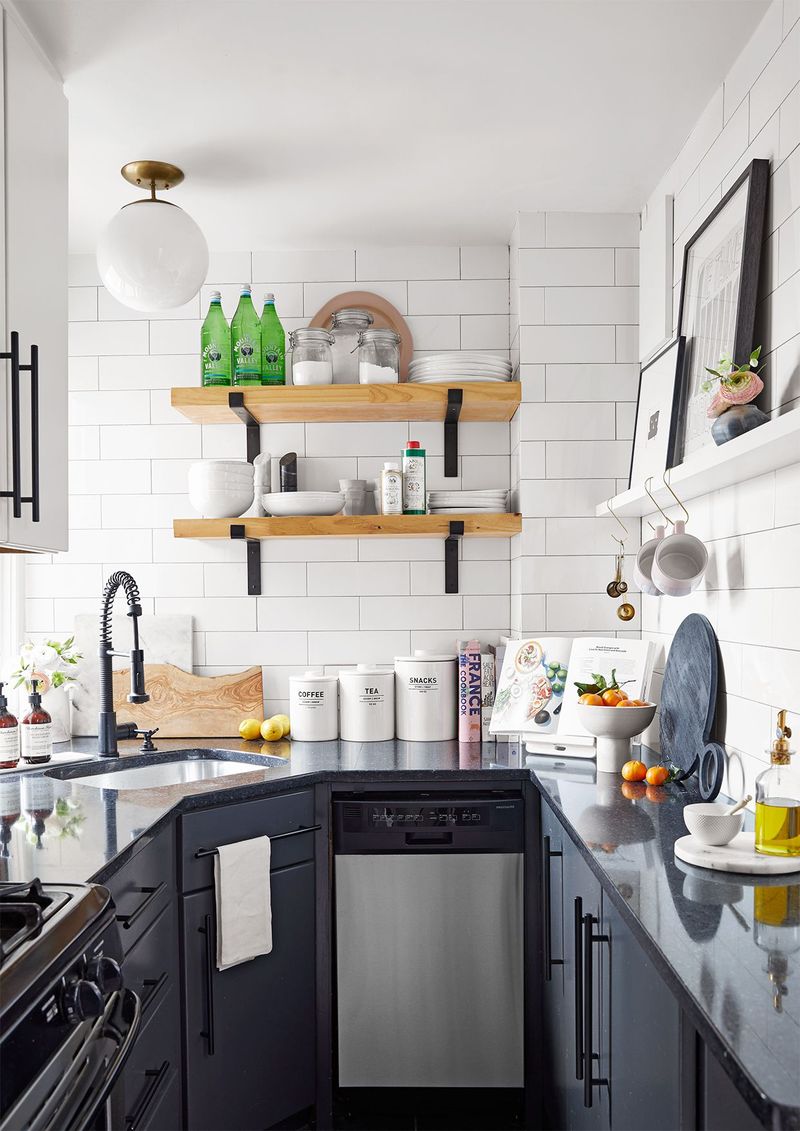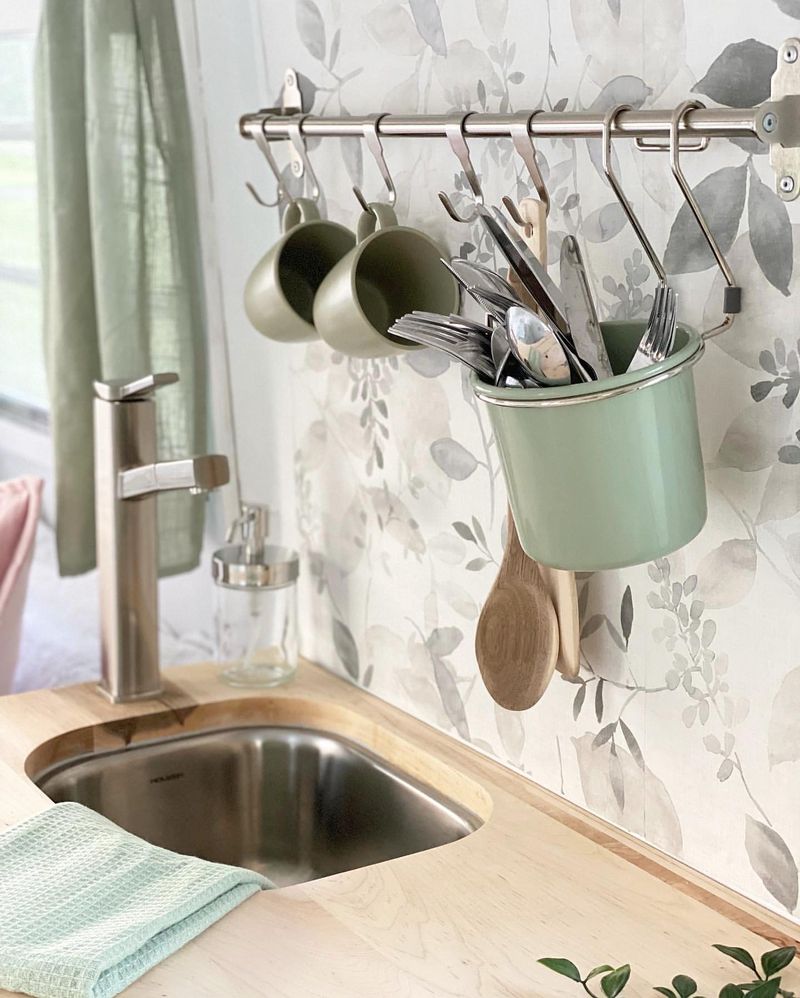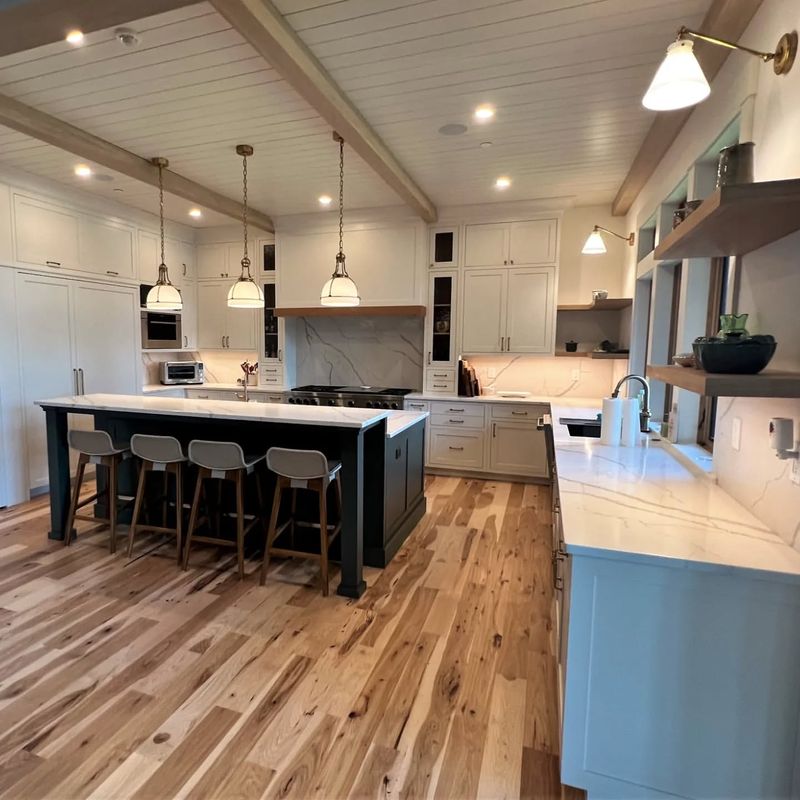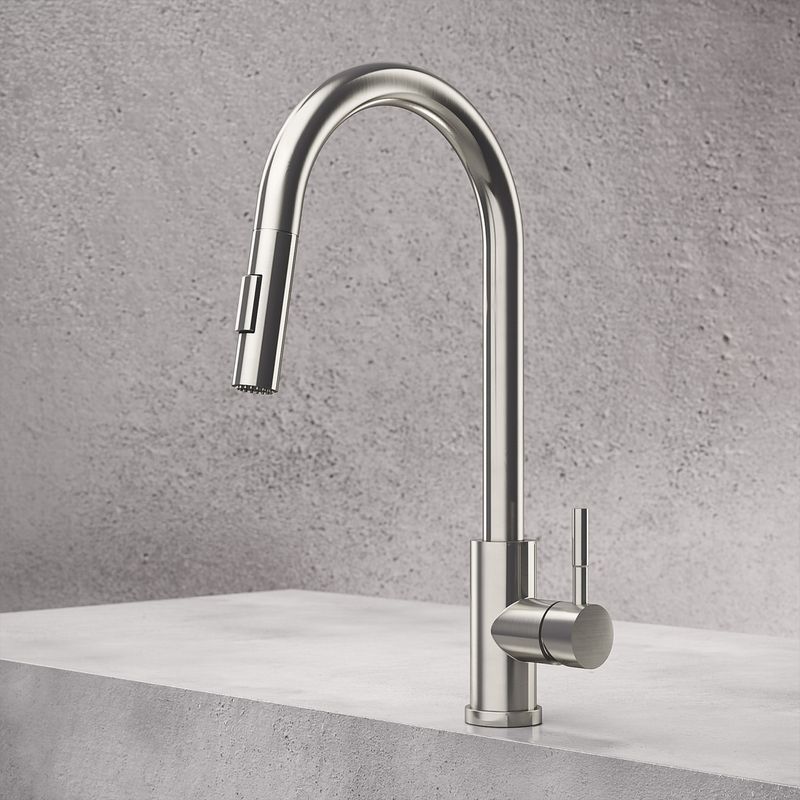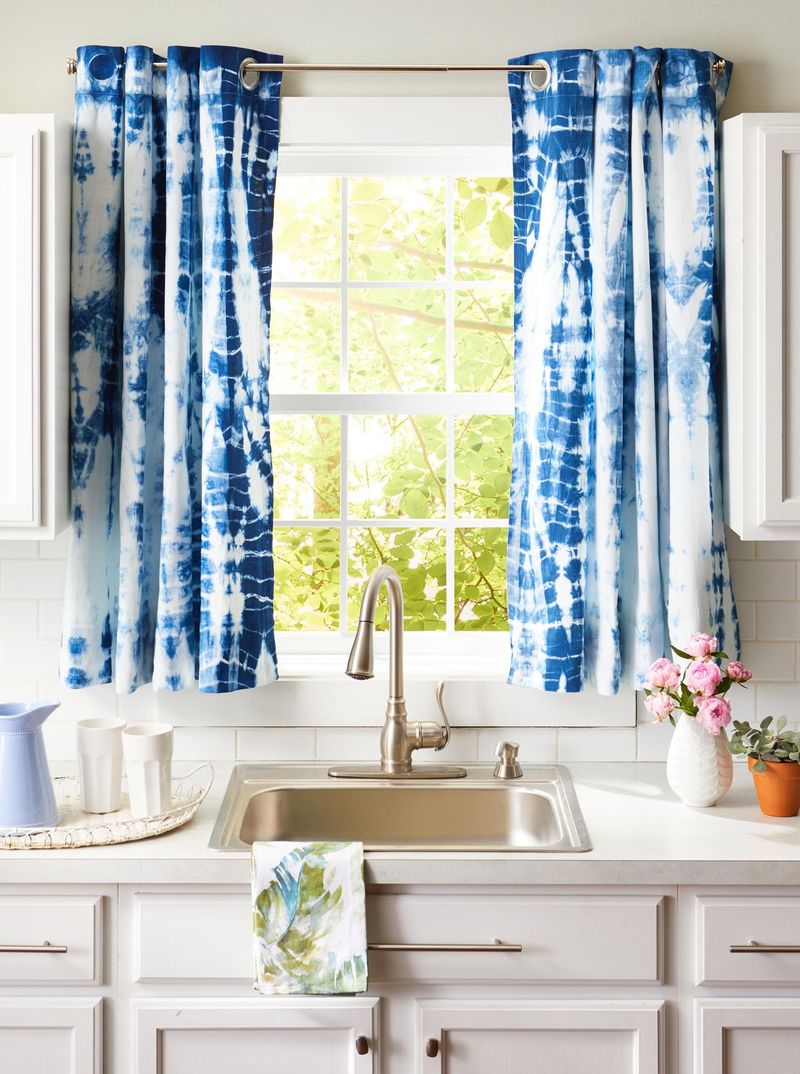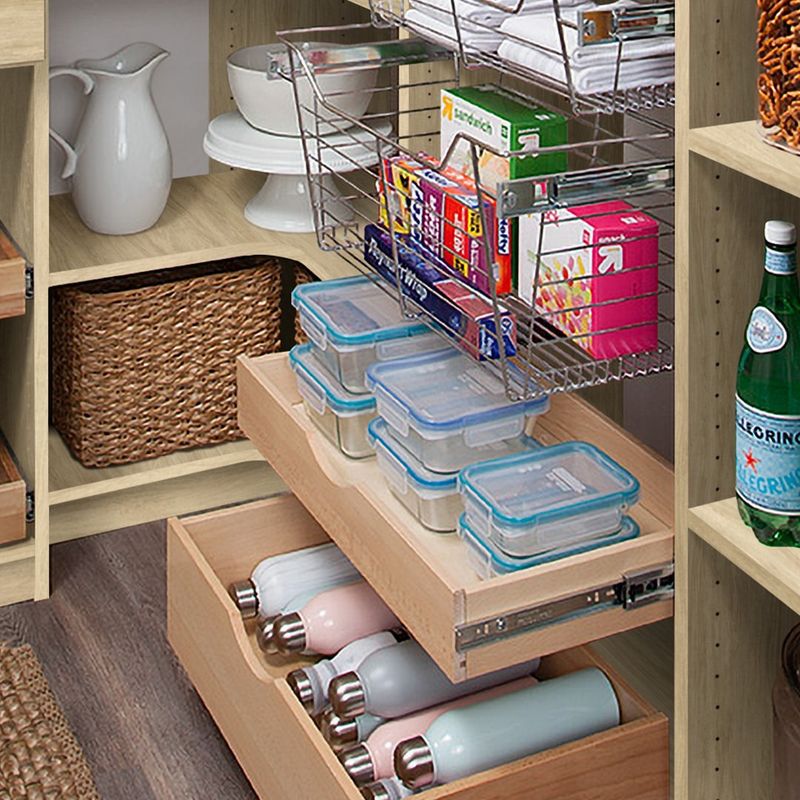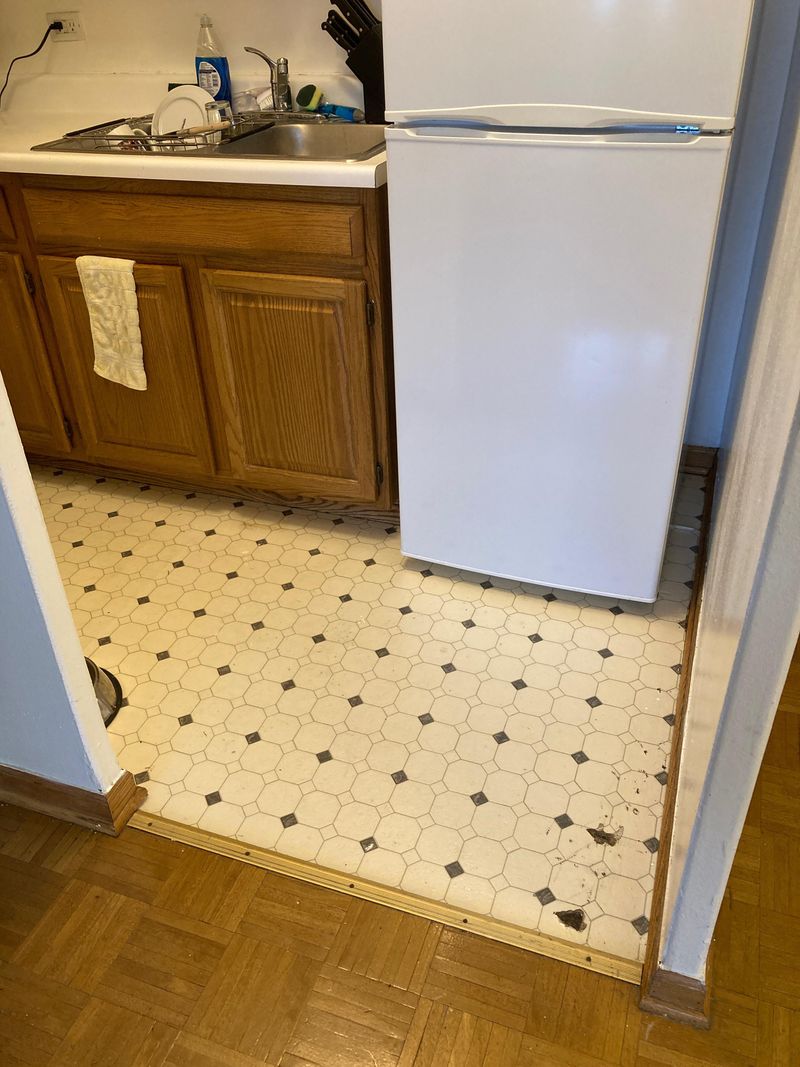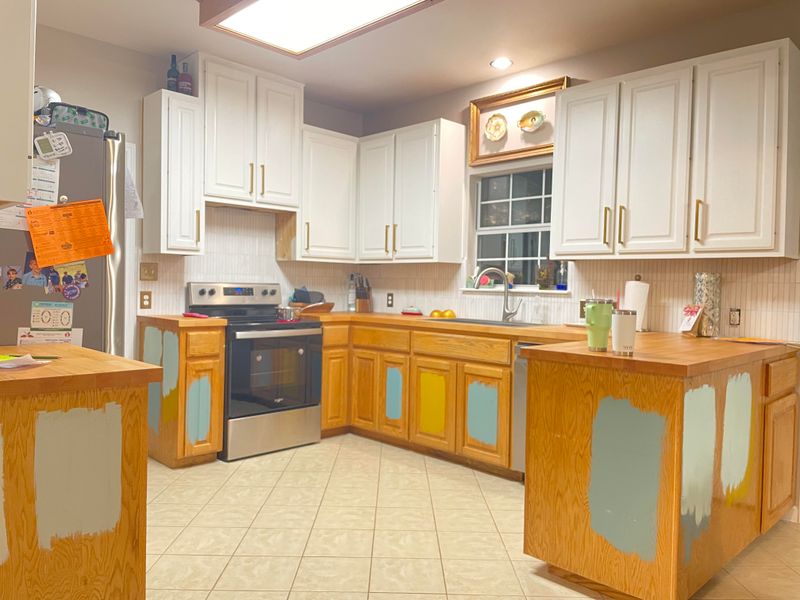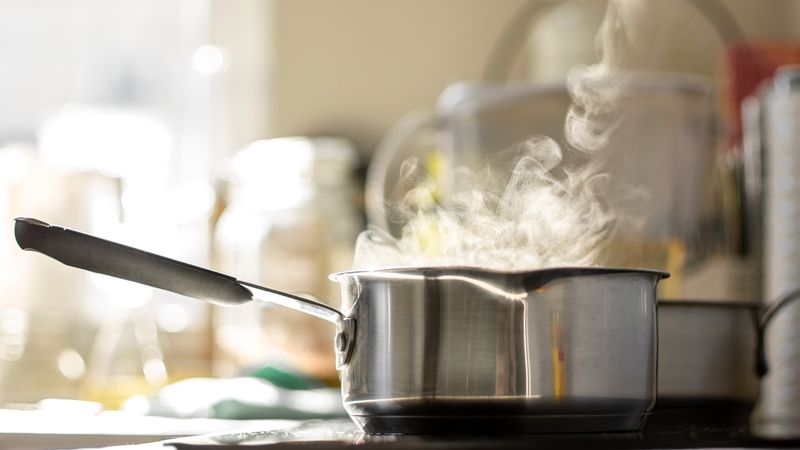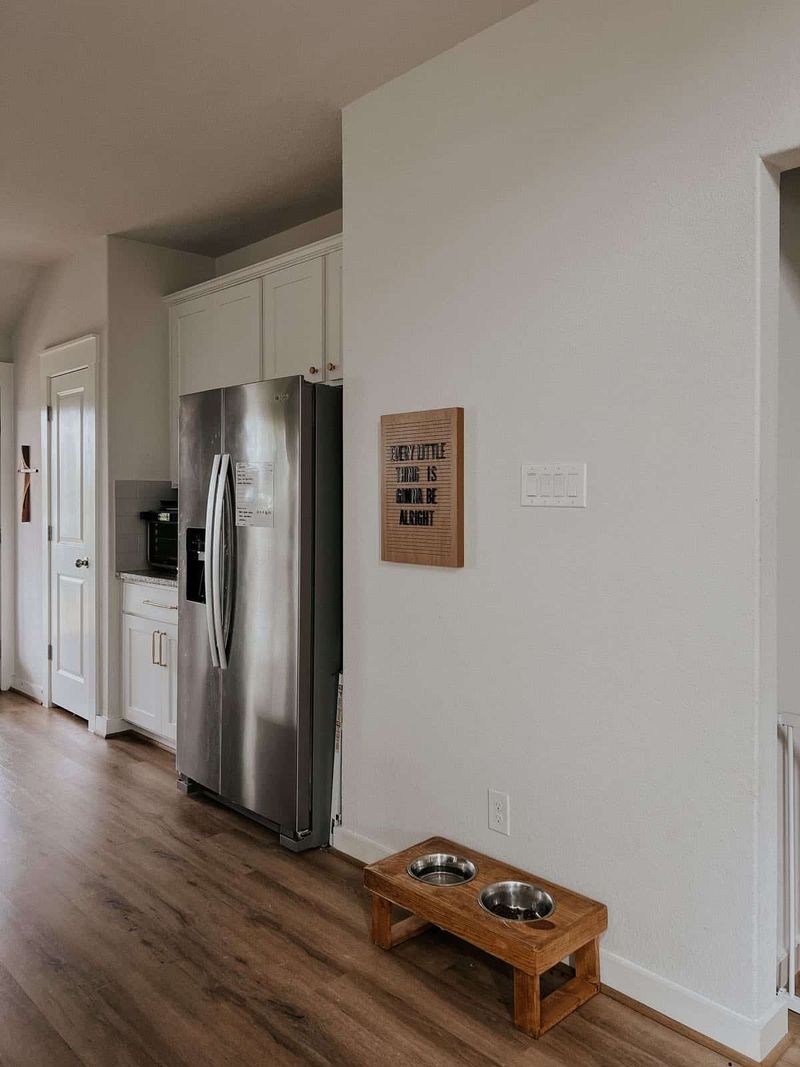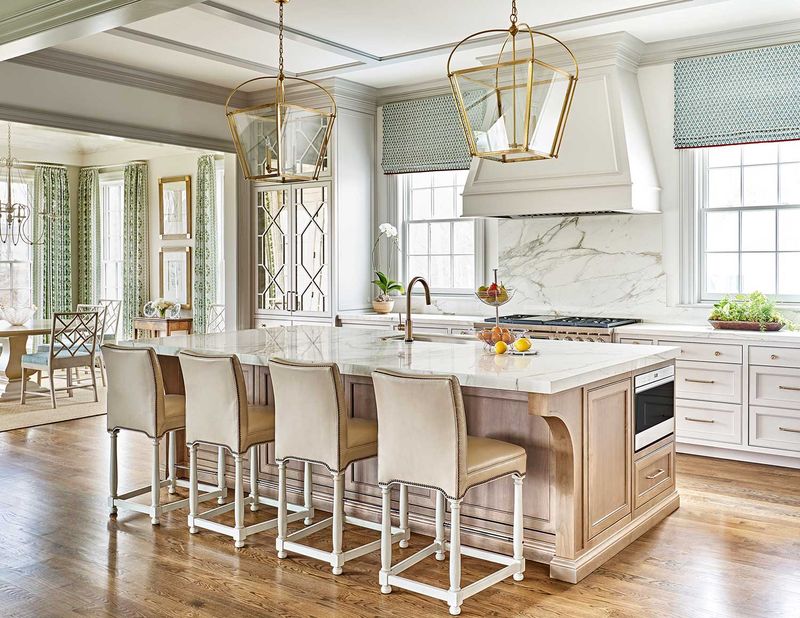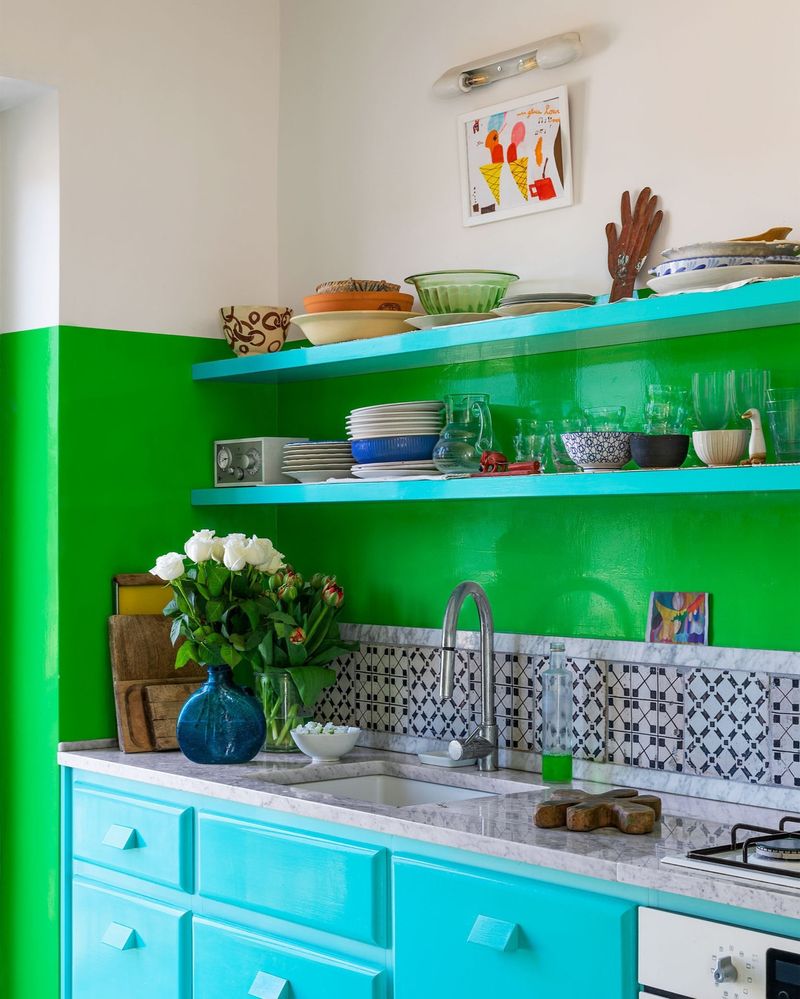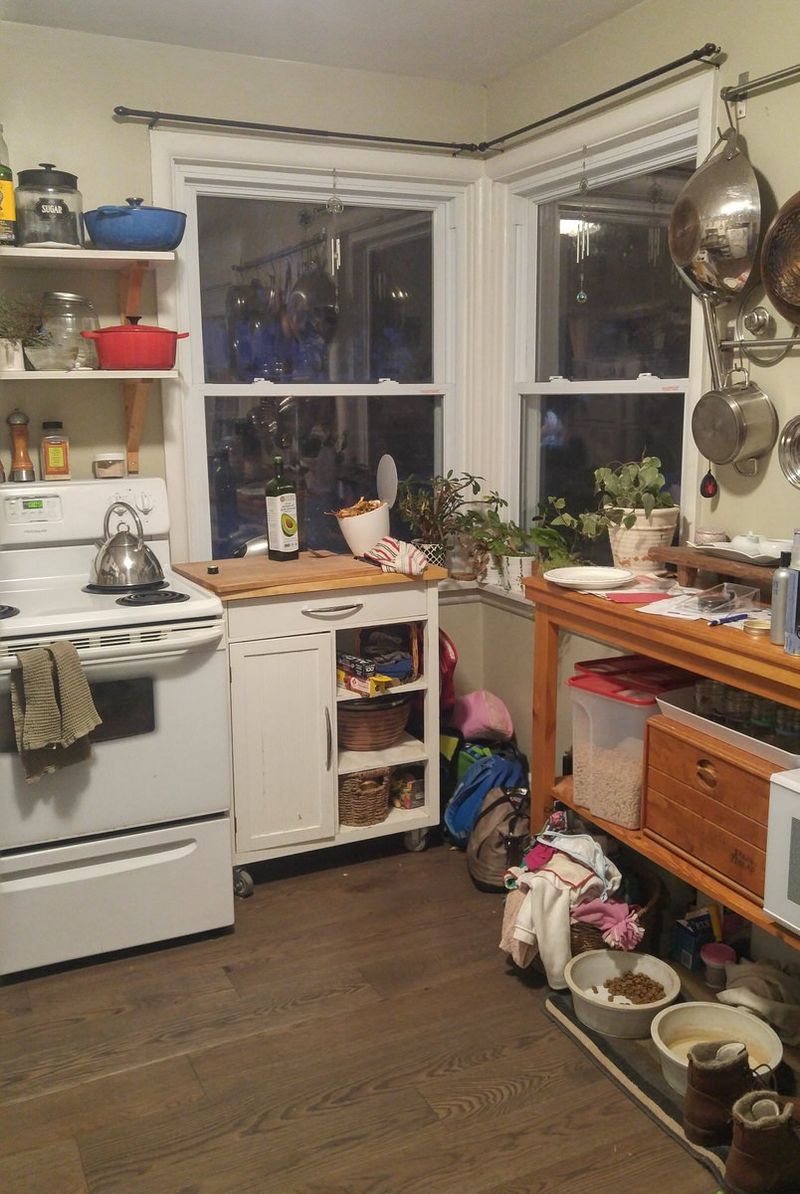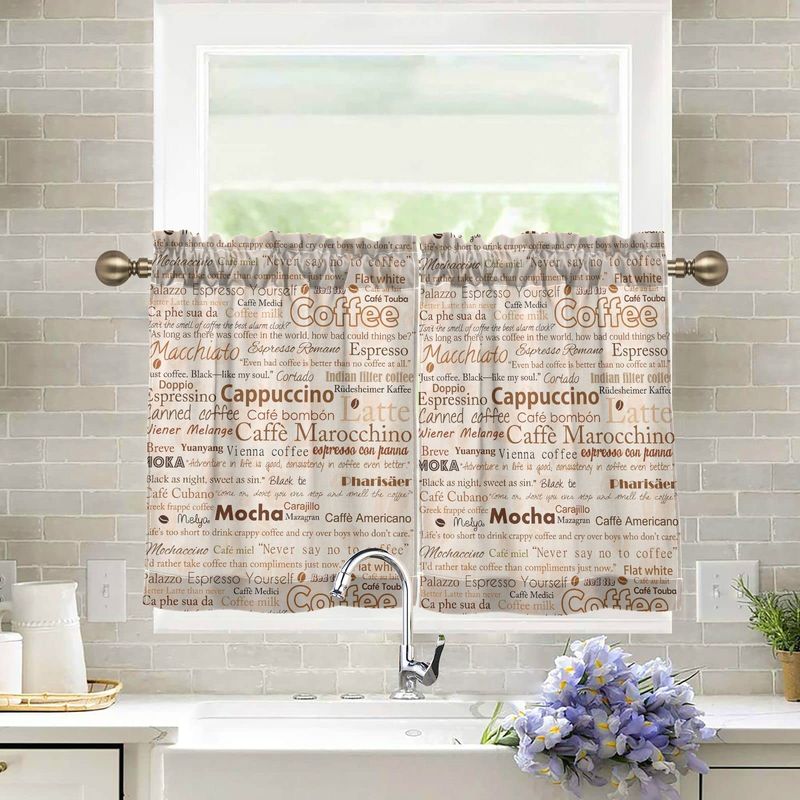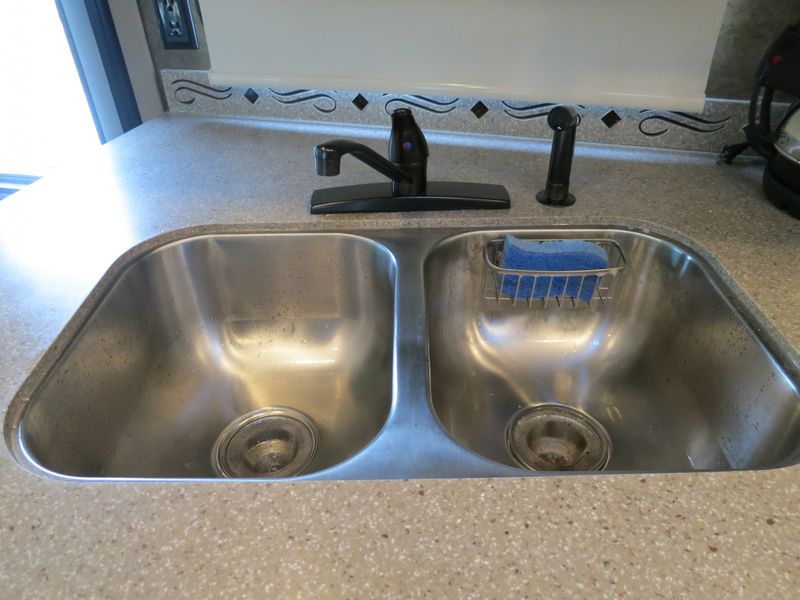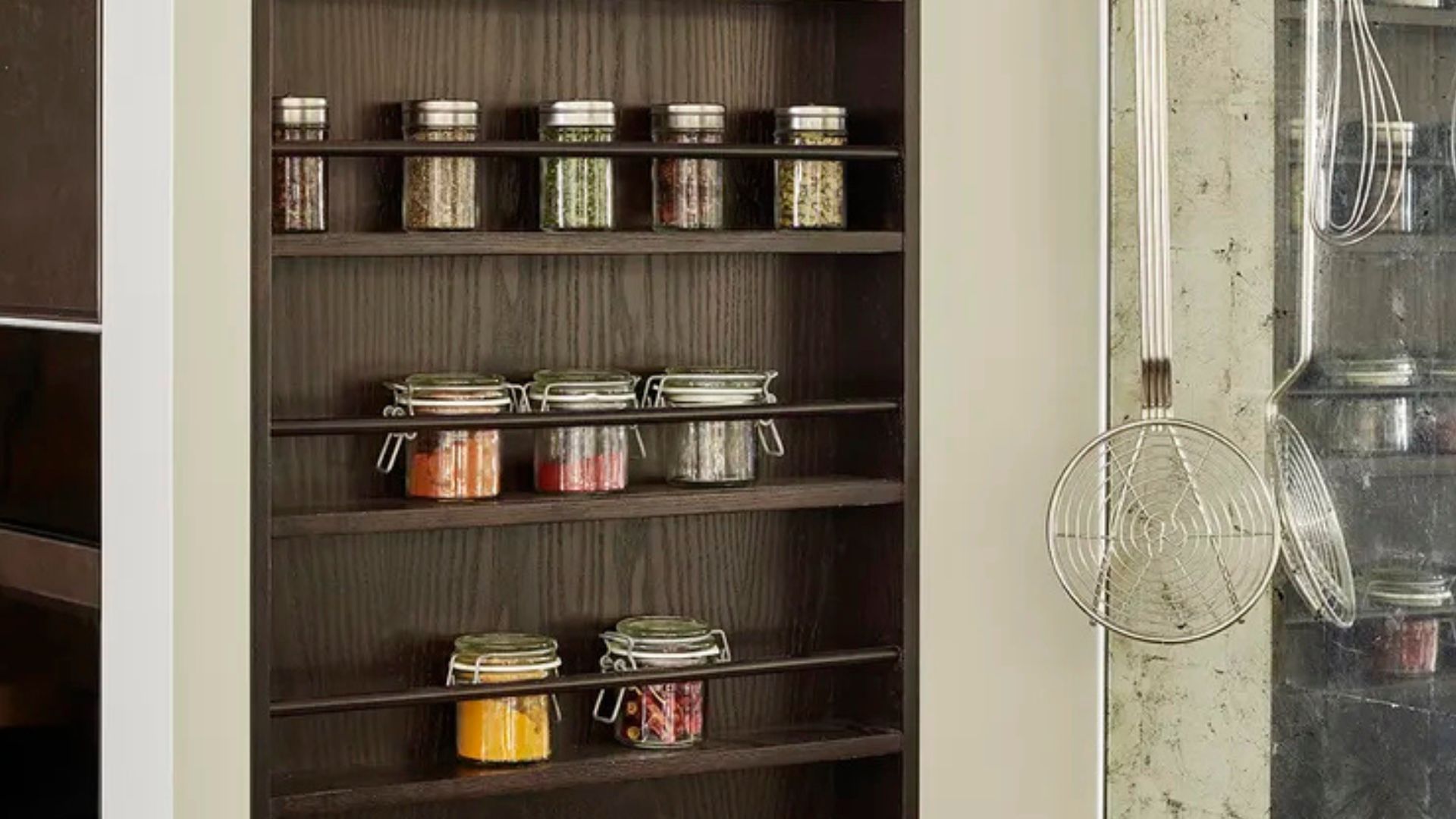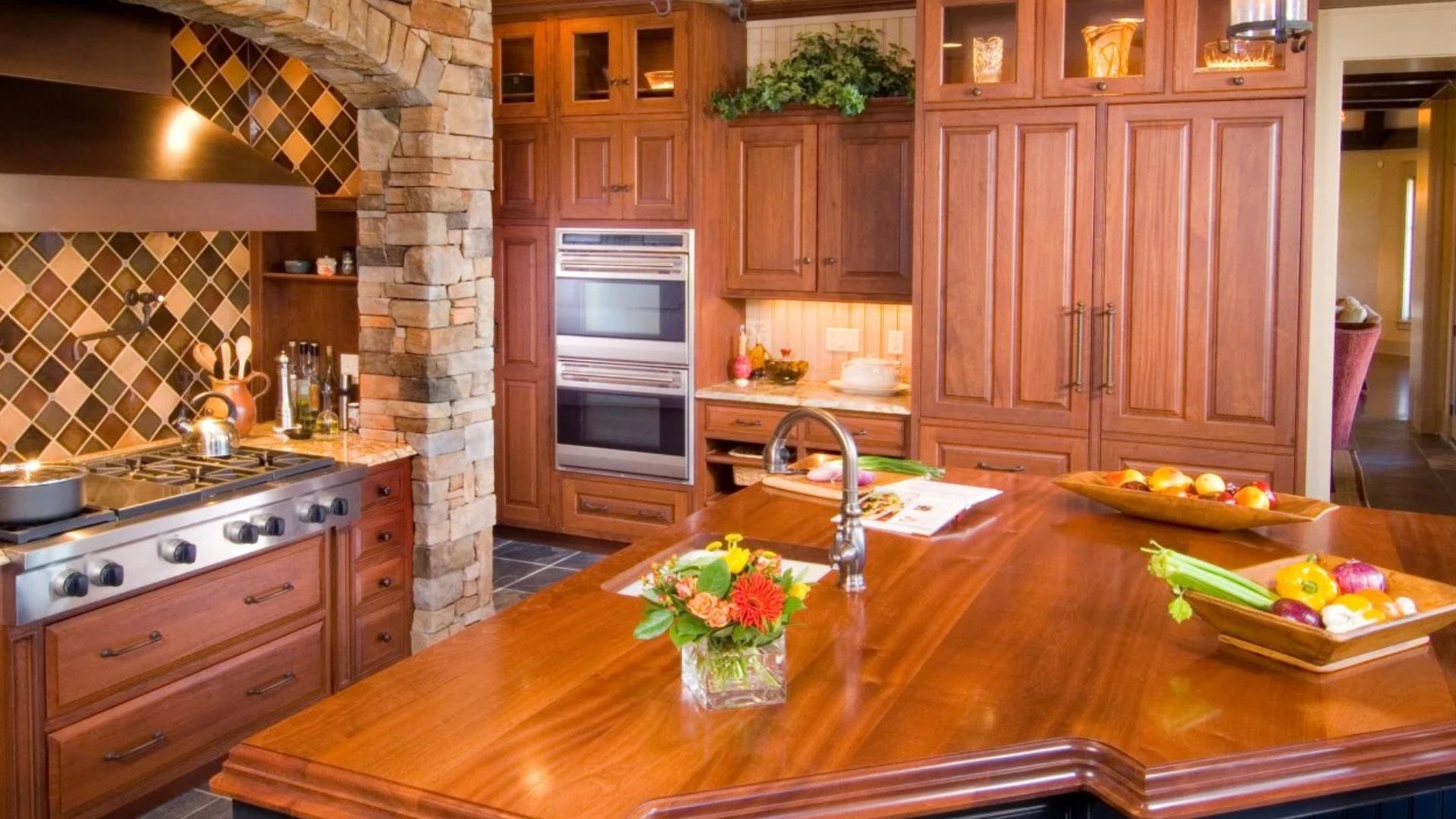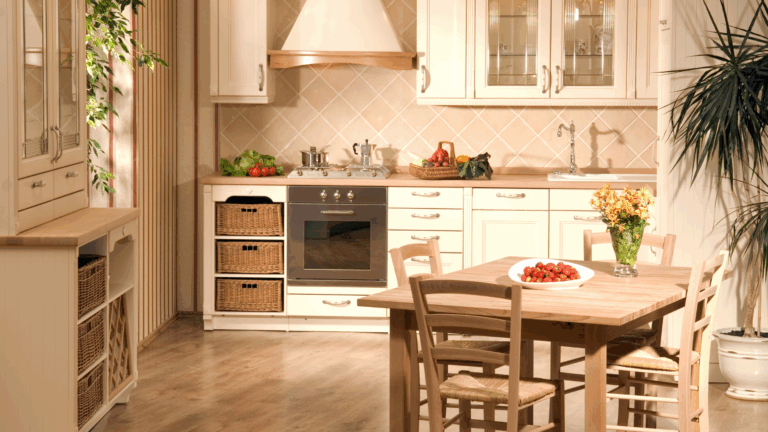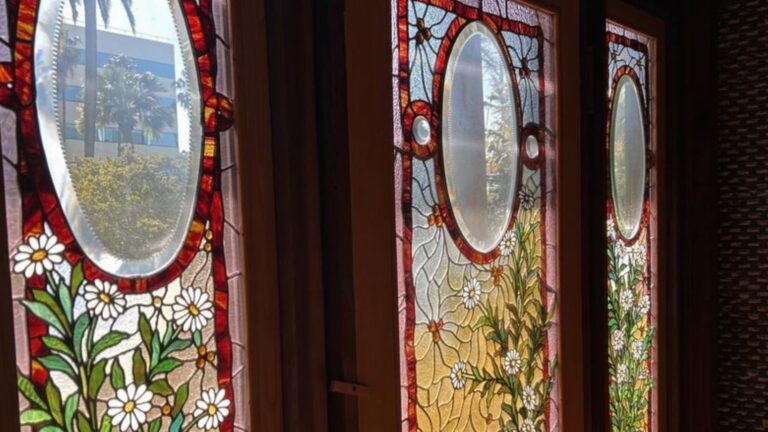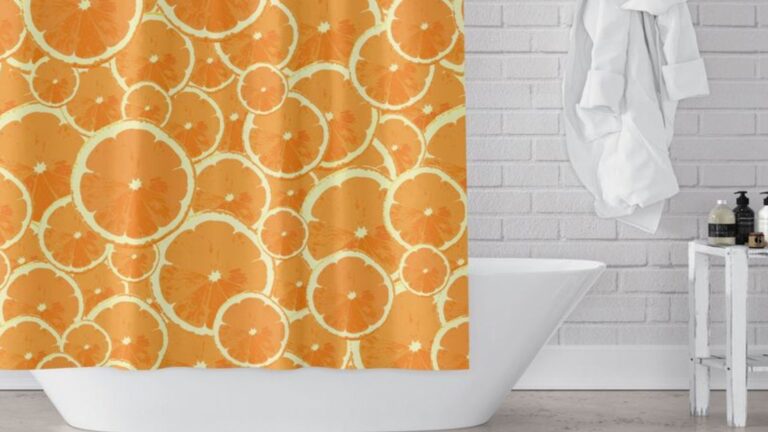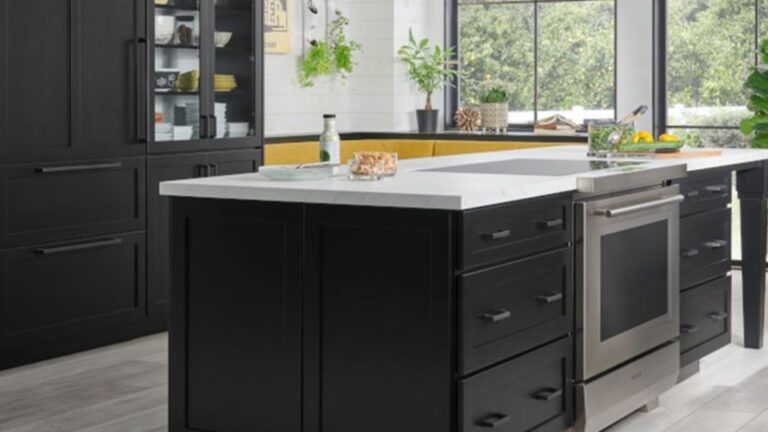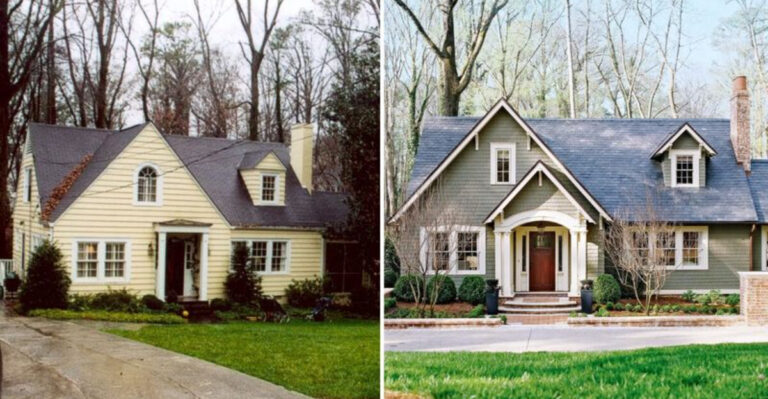30 Mistakes Designers Warn To Skip Because They Make Small Kitchens Look Cheap
Pulling off a stylish small kitchen isn’t just about cramming things into corners – it’s about smart choices and avoiding design traps that shrink the space or make it feel bargain-bin basic.
Tiny kitchens can be huge on charm, but only if you sidestep the usual blunders that derail good design.
From storage slipups to lighting letdowns, here are 30 missteps pros say instantly cheapen a compact kitchen – and what to do instead.
1. Cluttered Countertops
Keeping countertops clutter-free is crucial in small kitchens. Overcrowding them with appliances, jars, and decorative items can make the space appear messy and cheap. Instead, opt for minimalism, using only essential items and storing others away.
Consider wall-mounted shelves to display frequently used items, thus freeing up counter space. By maintaining a tidy appearance, the kitchen will feel more open and sophisticated, enhancing its overall aesthetic and functionality.
2. Mismatched Hardware
Choosing mismatched hardware may result in a disjointed and unfinished look. Consistency in cabinet handles and knobs lends a cohesive and polished appearance. Select hardware that complements the kitchen’s style and color scheme.
If variety is desired, consider coordinating materials or shapes. Ensuring harmony in these small details elevates the kitchen’s overall design, creating a seamless and attractive environment.
3. Poor Lighting
A well-lit kitchen feels welcoming and spacious, while poor lighting can make it appear dingy and cheap. Avoid relying solely on overhead lights. Incorporate layered lighting, such as under-cabinet and task lights, to illuminate workspaces.
Update outdated fixtures with modern designs to enhance the room’s ambiance. Good lighting not only improves functionality but also adds elegance to the kitchen’s design, brightening the entire space.
4. Ignoring Vertical Space
Vertical space is a valuable asset in small kitchens. Neglecting it means missing out on storage opportunities. Utilize walls by adding shelves or hanging racks to store kitchen essentials.
Tall cabinets can also provide extra storage without occupying floor space. By capitalizing on vertical areas, the kitchen becomes more organized and efficient, preventing a cluttered and cheap appearance.
5. Cheap-looking Materials
Opting for low-quality materials can diminish a kitchen’s appeal. Cheap-looking laminate or particleboard gives an impression of carelessness. Invest in durable and attractive materials like quartz or solid wood.
These choices not only withstand wear but also add elegance to the space. The investment in quality materials pays off by enhancing the kitchen’s aesthetic and longevity, ensuring it remains a timeless part of the home.
6. Outdated Appliances
Old appliances can make a kitchen feel antiquated and cheap. Updating to modern, energy-efficient models enhances both function and appearance. Sleek designs contribute to a contemporary look, while saving energy costs.
Consider stainless steel or built-in options for a seamless integration with cabinetry. Modern appliances elevate the kitchen’s design, boosting its overall appeal and efficiency.
7. Dark Color Schemes
Dark colors can make a small kitchen feel smaller and uninviting. Instead, utilize light and neutral tones to open up the space. Whites, creams, and soft grays reflect light, creating an airy atmosphere.
Accents of color can be added through accessories or backsplashes. A lighter palette not only enhances the kitchen’s size but also contributes to a clean and modern look.
8. Lack of Personality
A kitchen devoid of personality can seem cheap and uninspired. Incorporate elements that reflect your style, such as colorful backsplashes or unique lighting fixtures.
Personal touches like artwork or vintage finds add character and warmth. By infusing personality, the kitchen becomes a welcoming and unique space that stands out with elegance and charm.
9. Ignoring Traffic Flow
A poorly planned layout hinders movement and functionality. Ensure there is enough space for easy navigation between areas. Avoid placing appliances or furniture that block pathways.
Consider the kitchen work triangle: sink, stove, and refrigerator should be easily accessible. Proper traffic flow creates an efficient workspace, enhancing the kitchen’s usability without compromising on style.
10. Overlooking Backsplash
A backsplash is both practical and aesthetic. Ignoring it leaves walls vulnerable to stains and damage, and the kitchen appears unfinished. Choose materials like tile or glass to add texture and color.
A well-designed backsplash enhances the room’s theme and protects surfaces. It serves as a focal point, adding visual interest and sophistication to the kitchen design.
11. Excessive Open Shelving
Open shelving, when overdone, can make a kitchen look cluttered and cheap. Limit open shelves to a few strategic spots, displaying neatly organized items.
Balance open shelves with cabinets to conceal less attractive necessities. This mix maintains visual interest while preventing a chaotic appearance. Thoughtful placement of open shelving contributes to a stylish and functional kitchen.
12. Neglecting the Ceiling
The ceiling often goes unnoticed, yet it plays a crucial role in design. Leaving it plain can make the kitchen feel unfinished. Consider painting it a light color or adding subtle patterns to draw the eye upward.
Crown molding or beams can add architectural interest. Enhancing the ceiling creates a complete and cohesive design, elevating the kitchen’s overall look.
13. Too Many Patterns
An excess of patterns can overwhelm a small kitchen, making it look busy and cheap. Choose one or two patterns to highlight, like a patterned floor or backsplash, and keep other areas simple.
Mixing textures, like wood and metal, adds depth without visual chaos. Restraint in pattern use ensures a balanced and elegant design that enhances the kitchen’s style.
14. Inadequate Storage Solutions
Lack of storage leads to clutter and a chaotic kitchen appearance. Implement smart storage solutions like pull-out trays, lazy Susans, or drawer dividers.
Utilize every inch efficiently, including corners and under-sink spaces. Thoughtful storage design creates an organized and tidy kitchen, enhancing both functionality and aesthetics.
15. Ignoring the Sink Area
The sink area is a focal point and mustn’t be ignored. A stylish faucet or a decorative backsplash can elevate its look. Ensure the sink is proportionate to the kitchen size.
Add accessories like soap dispensers or a dish rack for added convenience. A well-designed sink area enhances both the kitchen’s functionality and visual appeal.
16. Skipping Rug and Mat
A kitchen without rugs or mats can feel cold and uninviting. Adding a well-chosen rug injects warmth and style, softening hard surfaces.
Opt for durable, easy-to-clean materials suitable for kitchen use. A rug not only enhances comfort but also adds a splash of color or pattern, enriching the kitchen’s overall design.
17. Choosing Cheap Fixtures
Cheap fixtures can detract from the kitchen’s elegance. Invest in quality faucets and lighting to elevate its appearance. Sleek, modern fixtures contribute to a high-end look.
Consider finishes like brushed nickel or matte black for added sophistication. Quality fixtures enhance the kitchen’s functionality and aesthetic, providing a lasting impression.
18. Overlooking Natural Light
Natural light is vital for a welcoming kitchen. Covering windows with heavy drapes can make it feel dark and cramped. Opt for sheer curtains or blinds to let light in while maintaining privacy.
Consider strategically placed mirrors to reflect light and brighten the space. Embracing natural light enhances the kitchen’s atmosphere, making it feel open and airy.
19. Overstuffed Cabinets
Stuffed cabinets create clutter and chaos. Regularly declutter to keep them organized. Use stackable or space-saving items to maximize capacity.
Employ organizers like racks or bins to maintain order. Tidy cabinets contribute to a clean and efficient kitchen, enhancing its overall design and functionality.
20. Ignoring Flooring Quality
Flooring sets the tone for the kitchen’s design. Neglecting its quality can diminish the room’s appeal. Choose durable materials like tile or hardwood that withstand daily wear.
Consider patterns or colors that complement the kitchen’s style. Quality flooring enhances the space’s aesthetic, ensuring it remains attractive and functional over time.
21. Unbalanced Decor
Decor imbalance disrupts the kitchen’s harmony. Ensure decor complements the overall theme. Avoid clashing styles or excessive decorations.
Opt for a few statement pieces that tie the room together. Balanced decor creates a cohesive and inviting kitchen, contributing to its elegant design.
22. Neglecting Ventilation
Ventilation is essential for a healthy kitchen. Lack of it leads to lingering odors and moisture build-up. Install a good range hood or exhaust fan to improve air circulation.
Proper ventilation keeps the kitchen fresh and prevents damage from moisture, enhancing the space’s comfort and longevity.
23. Ignoring Wall Space
Blank walls are missed opportunities for storage or decor. Use them to hang pots, utensils, or art. This not only decorates but also saves space.
Consider magnetic strips for knives or hooks for mugs. Maximizing wall use enhances the kitchen’s functionality and style, preventing a sparse appearance.
24. Overly Large Furniture
Large furniture can overwhelm a small kitchen, making it appear cramped. Choose appropriately sized furniture that complements the space.
Opt for multi-functional pieces like drop-leaf tables. By selecting furniture wisely, the kitchen remains spacious and functional, enhancing its comfort and usability.
25. Uncoordinated Color Palette
A mismatched color palette creates visual chaos. Ensure colors complement each other, creating a seamless look. Stick to a cohesive theme with accents for contrast.
Consider using color wheel principles to guide choices. A coordinated palette enhances the kitchen’s visual appeal, portraying sophistication and elegance.
26. Neglecting the Entryway
The kitchen entryway sets the initial impression. A cluttered entrance can feel unwelcoming. Keep it tidy and incorporate a welcoming element like a small mat or art piece.
Ensure it reflects the kitchen’s style for a seamless transition. A well-designed entryway enhances the kitchen’s appeal, making it inviting and cohesive.
27. Cheap Window Treatments
Inexpensive window treatments can cheapen a kitchen’s look. Opt for quality blinds or curtains that complement the room’s design.
Choose fabrics that let in light while offering privacy. Quality window treatments enhance aesthetics and provide functionality, contributing to a polished kitchen design.
28. Ignoring Aging Features
Aging features can make a kitchen look neglected. Regular maintenance, such as repainting or updating cabinets, keeps it fresh.
Replace worn items like handles or fixtures for a modern touch. Keeping the kitchen updated enhances its appearance and longevity, ensuring it remains a vibrant part of the home.
29. Skipping Personalized Storage
Generic storage solutions may not suit every kitchen’s unique layout. Skipping customized storage leads to wasted space and disorganization. Opt for built-in spice racks, vertical dividers, or drawer inserts that cater to your cooking habits and tools.
Personalized storage enhances efficiency and keeps everything in its place—elevating the kitchen from cluttered to cleverly curated.
30. Inconsistent Design Themes
Mixing rustic cabinets with ultra-modern lighting or pairing farmhouse sinks with industrial shelves can create visual tension rather than cohesion. An inconsistent theme confuses the eye and diminishes overall elegance.
Choose a unifying design direction—be it contemporary, cottagecore, or minimalist—and ensure every element complements that story. Consistency adds flow, polish, and unmistakable style.

